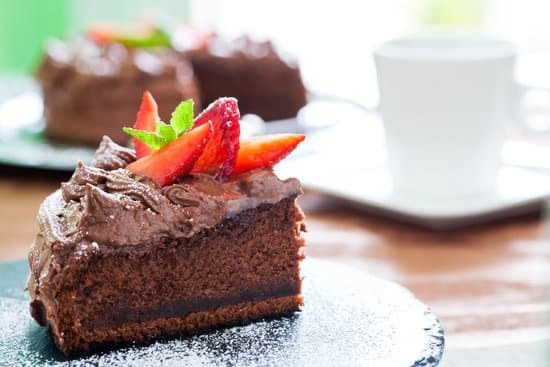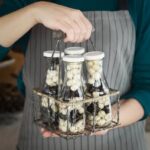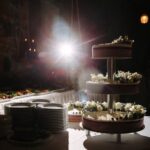Do you want to learn how to decorate a cake like a pro? Whether you’re a seasoned baker or just starting out, mastering the art of cake decoration can take your baking skills to the next level.
The way a cake is decorated can truly elevate any occasion, from birthdays and weddings to holidays and special events. In this article, we will explore the essential tools, techniques, and tips for achieving professional-looking cake decorations that are sure to impress.
The importance of cake decoration cannot be overstated. A beautifully decorated cake not only enhances the visual appeal of the dessert but also adds a personal touch and artistic flair to any celebration. Whether you’re creating a simple yet elegant design or a complex, show-stopping masterpiece, understanding how to decorate a cake like a pro will allow you to express your creativity and leave a lasting impression on your guests.
In this comprehensive guide, we will delve into everything you need to know about professional cake decorating. From essential tools and materials to understanding different frosting techniques, selecting the right color palette, creating intricate designs, adding texture and dimension, applying finishing touches, troubleshooting common issues, and more – we’ve got you covered. So let’s roll up our sleeves and get ready to elevate your cake decorating skills to pro level.
Essential Tools and Materials
When it comes to decorating a cake like a pro, having the right tools and materials is crucial. Here’s a detailed list of everything you’ll need to achieve professional results:
1. Offset Spatula: This tool is essential for spreading and smoothing frosting on your cake, creating a flawless finish.
2. Piping Bags and Tips: Invest in a variety of piping tips to create different designs and textures on your cakes. Coupled with piping bags, these are crucial for intricate decorations.
3. Turntable: A revolving cake turntable makes it much easier to frost and decorate cakes evenly and smoothly.
4. Bench Scraper: This tool is perfect for achieving sharp, clean edges when frosting your cake.
5. Fondant Rolling Pin: If you plan on working with fondant, a non-stick rolling pin specifically designed for fondant work is essential.
Finding these items can be as simple as visiting your local kitchen supply store or browsing online retailers that specialize in baking supplies. Many craft stores also carry these items, especially if you’re looking for more decorative items such as edible embellishments or metallic accents.
Investing in high-quality tools and materials will go a long way in ensuring that your cake decorations look polished and professional.
| Tool/Material | Description |
|---|---|
| Offset Spatula | Used for spreading and smoothing frosting on cakes |
| Piping Bags and Tips | Essential for creating different designs and textures on cakes |
| Turntable | Makes it easier to frost and decorate cakes evenly |
| Bench Scraper | Perfect for achieving sharp, clean edges when frosting cakes |
Understanding Different Frosting Techniques
When it comes to decorating a cake like a pro, mastering different frosting techniques is key. Each technique offers its own unique look and style, allowing you to create professional-looking designs for any occasion. Here are some popular frosting techniques and step-by-step instructions on how to use them effectively:
1. Buttercream:
Buttercream is one of the most versatile and widely used frosting techniques in cake decorating. It is smooth, creamy, and easy to work with, making it perfect for both simple and intricate designs. To achieve a professional finish with buttercream, start by applying a crumb coat to the cake before adding the final layer of frosting. Use a bench scraper or offset spatula to smooth out the buttercream for a flawless look.
2. Fondant:
Fondant is a type of icing that can be rolled out and draped over the cake for a smooth and polished appearance. It allows for endless possibilities in terms of shapes, designs, and decorations. To decorate a cake like a pro with fondant, make sure to knead it properly before rolling it out to prevent air bubbles. Use fondant tools such as cutters, molds, and embossers to create intricate designs and textures.
3. Royal Icing:
Royal icing is commonly used for creating fine details such as lace patterns, delicate flowers, and intricate piping work. It dries hard and has a smooth matte finish, making it ideal for detailed decorations that require precision. To master royal icing for professional cake decorating, practice consistency when creating different textures such as flood icing for smooth surfaces or stiff icing for intricate designs.
By understanding and practicing these frosting techniques diligently, you can elevate your cake decorating skills to achieve professional results that will impress any audience.
Choosing the Right Color Palette
When it comes to cake decorating, choosing the right color palette is essential in creating a visually appealing and cohesive design. Whether you are working on a birthday cake, wedding cake, or any other special occasion, the color scheme can make all the difference in the overall presentation of your creation.
Tips on Selecting the Perfect Color Palette
To start, consider the theme or occasion for which the cake is being designed. For example, if it’s a birthday cake for a child, bright and playful colors may be more appropriate. On the other hand, a wedding cake may require more elegant and muted tones. Take into account the event’s color scheme and any specific requests from your client or recipient.
Additionally, think about color psychology and how different colors evoke emotions and moods. For instance, warm colors like red and orange can create a sense of energy and excitement, while cool colors such as blue and green can convey calmness and tranquility. Understanding these nuances can help you make informed decisions when selecting your color palette.
Using Color Theory to Create Visually Appealing Cake Designs
It’s also important to understand basic color theory principles when creating your color palette. Consider concepts such as complementary colors (colors opposite each other on the color wheel), analogous colors (colors next to each other on the color wheel), and monochromatic schemes (variations of one color). These principles can guide you in choosing harmonious combinations that are pleasing to the eye.
Furthermore, take into account factors like contrast and balance in your design. A well-balanced color palette will ensure that no single hue overpowers the others and that there is visual harmony throughout the cake’s decorations.
By applying these tips and understanding how to utilize color theory effectively, you can confidently choose the right color palette for your cake designs and create stunning visual compositions that are sure to impress any client or guest at an event. Mastering this skill is essential in learning how to decorate a cake like a pro.
Creating Intricate Designs
Mastering Piping Techniques
Piping is a classic and versatile cake decorating technique that can be used to create intricate designs, borders, and lettering. To achieve professional-looking results, it is essential to master different piping tips and practice the right pressure control. Start by familiarizing yourself with basic piping tips such as round, star, and petal tips. Once you have mastered these, you can move on to more advanced tips for creating specific designs.
Exploring Stenciling and Hand-Painting
Stenciling and hand-painting are effective ways to add detailed designs and patterns to your cakes. Stencils can be used with royal icing or powdered sugar to create beautiful motifs and backgrounds on the cake surface. Hand-painting allows for complete artistic freedom in creating intricate designs or personalized messages on cakes. Practice using food-safe paints and brushes to achieve a professional hand-painted finish.
Mastering the Art of Sculpting
For those looking to take their cake decorating skills to the next level, sculpting edible decorations from fondant or gum paste can add a unique touch to any cake design. Whether it’s creating lifelike flowers, figurines, or ornate shapes, mastering the art of sculpting will allow you to bring your creative vision to life on your cakes. Practice sculpting different shapes and figures until you feel confident in adding them as intricate details on your cakes.
By honing these intricate designing techniques such as piping, stenciling, hand-painting, and sculpting, you can elevate your cake decorating skills to a professional level. With dedication and practice, you’ll soon be able to decorate cakes like a pro for any occasion or celebration.
Incorporating Texture and Dimension
Decorating a cake like a pro involves more than just beautiful frosting and vibrant colors. Adding texture and dimension to your cake decorations can take your creations to the next level. Whether you’re aiming for a rustic, whimsical, or elegant look, mastering these techniques will help you achieve professional results.
One way to add texture to your cake is by creating realistic-looking flowers using buttercream or fondant. Piping intricate designs such as delicate petals and leaves can give your cake a stunning three-dimensional effect. Additionally, incorporating edible lace or ruffles made from fondant can bring a touch of elegance and sophistication to your design.
Another technique for adding dimension is through hand-painting edible designs on your cake using food coloring and brushes. This method allows for endless creativity and personalization, whether it’s floral motifs or intricate patterns inspired by textiles. Stenciling is also a popular choice for adding detailed designs with precision and consistency.
Adding textures like these not only enhances the visual appeal of your cake but also provides a delightful sensory experience for anyone enjoying it. Keep in mind that practice and patience are key when mastering these techniques, so don’t be afraid to experiment with different tools and methods until you achieve the desired effect.
| Techniques | Tips |
|---|---|
| Piping intricate designs | Practice with different piping tips to create various flower shapes |
| Hand-painting edible designs | Use food-safe brushes and gel food coloring for precise painting |
| Stenciling | Invest in high-quality stencils for crisp, clean designs on your cake |
Finishing Touches
When it comes to decorating a cake like a pro, the finishing touches are what take your creation from good to great. Adding final embellishments and details can truly elevate the overall look of your cake, making it a stunning centerpiece for any occasion. Here are some tips on how to add those finishing touches like a professional:
- Adding edible embellishments: Edible flowers, pearls, or even intricate sugar sculptures can be used to adorn your cake and give it an elegant touch. These embellishments not only add visual appeal but also provide an additional textural element to the design.
- Using edible glitter and metallic accents: A sprinkle of edible glitter or the strategic placement of metallic accents can instantly glam up your cake. Whether you want a subtle shimmer or a bold sparkle, these elements can make your cake shine.
Incorporating these finishing touches requires attention to detail and precision. They should complement the overall design of the cake and enhance its aesthetic appeal without overwhelming it. By carefully selecting and placing these elements, you can achieve a polished and professional-looking final product.
Additionally, utilizing these finishing touches allows for creativity and personalization in your cake decorating. It’s an opportunity to showcase your unique style and artistry, making each cake you create truly one-of-a-kind.
Lastly, as with any aspect of cake decorating, practice makes perfect when it comes to adding finishing touches. Experiment with different techniques and materials to find what works best for your designs. Remember that small details can make a big difference in the overall presentation of your cake.
Troubleshooting Common Issues
As with any skill, cake decorating comes with its own set of challenges and common issues that decorators may encounter. Whether it’s dealing with a lopsided cake, runny frosting, or a design mishap, knowing how to troubleshoot these issues can make all the difference in creating a professional-looking cake. In this section, we will discuss some of the most common problems that arise during the cake decorating process and provide tips on how to address and fix them.
One of the most frustrating issues in cake decorating is when the frosting doesn’t adhere properly to the cake or starts to slide off. This can be caused by factors such as warm temperatures, overmixing the frosting, or applying it to a cake that hasn’t cooled completely.
To fix this issue, try chilling the cake for a few minutes in the fridge to firm up the frosting. You can also add more powdered sugar to thicken the frosting if it’s too runny.
Another common problem is air bubbles in the frosting, which can create an uneven texture on the cake’s surface. To prevent this issue, try tapping the filled piping bag on a flat surface to release any trapped air before piping. If you still end up with air bubbles on your frosted cake, carefully use a toothpick to puncture and smooth out any imperfections.
Finally, another frequent issue that decorators may face is creating a smooth and flawless finish on their cakes. Uneven layers of frosting or visible crumbs can detract from the overall look of the finished product. To resolve this problem, consider using a crumb coat-a thin layer of frosting applied before the final layer-to seal in any loose crumbs. Chilling the crumb-coated cake before adding the final layer of frosting can also help achieve a smoother finish.
By being aware of these common issues and knowing how to troubleshoot them effectively, decorators can overcome obstacles and continue working towards achieving professional-level results in their cake designs.
Conclusion
Decorating a cake like a professional takes practice, patience, and the right tools and techniques. By following the tips and guidelines provided in this article, anyone can achieve stunning results that will elevate any occasion. From understanding different frosting techniques to incorporating texture and dimension, the key to professional cake decorating lies in attention to detail and creativity.
One of the most important aspects of achieving professional-looking cake decorations is choosing the right color palette. By understanding color theory and selecting colors that complement each other, you can create visually appealing designs that will impress your guests. Additionally, mastering intricate designs such as piping, stenciling, and hand-painting will take your cake decorating skills to the next level.
The finishing touches are also crucial in achieving a polished and professional-looking final product. Adding edible embellishments, glitter, or metallic accents can take your cake from ordinary to extraordinary. It’s all about finding the perfect balance and knowing when to stop adding decorations so as not to overwhelm the design.
Additional Resources
In conclusion, mastering the art of cake decorating can truly elevate any occasion and make a memorable statement. By learning and practicing the essential tools, materials, and techniques outlined in this article, anyone can decorate a cake like a professional pastry chef. Whether it’s understanding different frosting techniques, choosing the perfect color palette, creating intricate designs, incorporating texture and dimension, adding finishing touches, or troubleshooting common issues, each step is crucial in achieving stunning and professional-looking results.
It’s important to remember that honing your cake decorating skills takes practice and patience. Don’t be discouraged by mistakes or mishaps along the way; instead, use them as an opportunity to learn and improve. With dedication and perseverance, you’ll be able to create beautiful and visually appealing cakes that will impress friends, family, or even potential clients.
For those looking to further enhance their cake decorating abilities, there are additional resources available such as tutorials, books, and online courses that provide advanced techniques and tips. By continuing to expand your knowledge and skillset through these resources, you’ll be able to take your cake decorating expertise to the next level and truly master the art of decorating a cake like a pro.
Frequently Asked Questions
How Do I Make My Cake Look Professional?
Making your cake look professional requires attention to detail and precision. Start by ensuring your cake layers are leveled and stacked evenly. Use a crumb coat before applying the final layer of frosting to create a smooth surface. Decorate with piping, edible flowers, or fondant designs for a polished look.
What Do Professionals Use to Decorate Cakes?
Professional cake decorators use a variety of tools to create exquisite designs. These may include pastry bags and tips for piping frosting, fondant molds for intricate shapes, edible paint for detailed artwork, and even airbrushing equipment for a seamless finish. Additionally, they often use edible decorations like sprinkles, pearls, or gold leaf to add elegance to their creations.
How Can I Get Better at Decorating My Cake?
Improving your cake decorating skills takes practice and patience. Start by learning basic techniques such as piping borders and creating simple designs. Experiment with different tools and materials to understand how they work and how they affect the final result. Take classes or watch tutorials for guidance and inspiration from experienced decorators.

Welcome to our cake decorating blog! My name is Destiny Flores, and I am the proud owner of a cake decorating business named Cake Karma. Our mission is to provide delicious, beautiful cakes for all occasions. We specialize in creating custom cakes that are tailored specifically to each customer’s individual needs and tastes.





